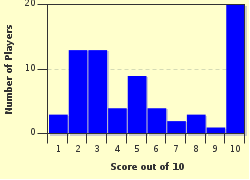Quiz Answer Key and Fun Facts
1. During the 20th Century, Major League Baseball umpires in the American League differed from National League umpires by wearing the large "balloon-style" chest protectors over the outside of their clothing while working behind home plate. When did Major League Baseball mandate American League umpires to wear the now standard "inside" chest protectors?
2. All Major League Baseball umpires are instructed on and most practice what is known as "HOKS", as prescribed by the Professional Baseball Umpiring Corp. What does "HOKS" refer to?
3. Emmett Ashford broke the race barrier in 1966 when he became the first African-American to umpire in Major League Baseball. Who was the first African-American umpire to officiate a Minor League baseball game, making his debut in 1951?
4. In what year did Major League Baseball first use instant replay as a means for an umpire to review an actual disputed play?
5. When Bill McKinley reached the ranks of Major League Baseball in 1946 as an umpire, what distinction did he bring to the game for the first time in baseball history?
6. Which foreign substance is allowed by umpires to be used on MLB game baseballs?
7. Who was the first female umpire to officiate in professional baseball?
8. Which Major League Baseball umpire also spent time as a professional referee for the National Basketball League (NBA)?
9. On April 18, 1956, American League umpire Ed Rommel recorded a first in Major League Baseball History. What was his claim to fame?
10. Which Major League Baseball umpire worked behind the plate during the last forfeit game of the 20th Century, and in what year?
Source: Author
MaceoMack
This quiz was reviewed by FunTrivia editor
Nightmare before going online.
Any errors found in FunTrivia content are routinely corrected through our feedback system.


